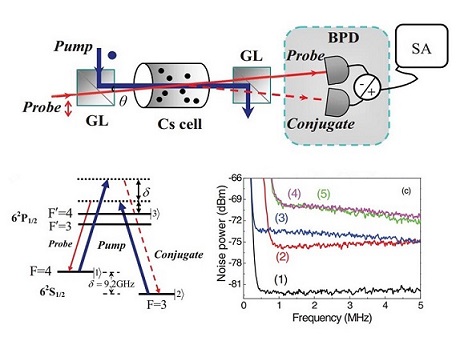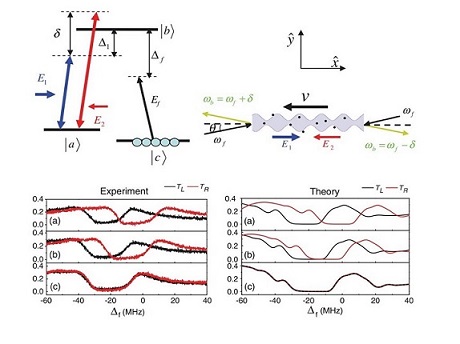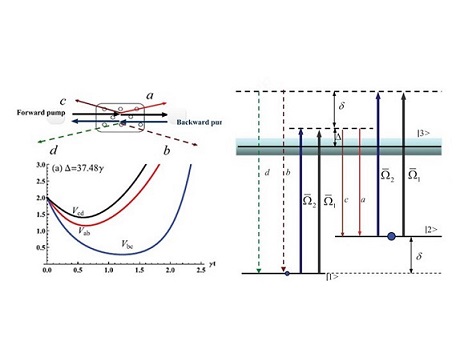Welcome to the personal web of Junxiang Zhang !
 Basic Information
Basic Information
Name: Junxiang Zhang
Sex: Famale
Position: Professor
Address: State Key Laboratory of Quantum Optics and Quantum Devices, Institute of Opto-electronics, Shanxi University, Taiyuan, Shanxi, 030006, China
Tel: +86-351-7018240(Office) +86-351-7113889(Lab)
Email: junxiang@sxu.edu.cn
Education:
Ph.D. in physics (optics), 1996-2000, Shanxi University.
M.S. in Physics (optics), 1991-1994, Shanxi University.
B.S. in Physics 1983-1987, Shanxi University.
Working Experice:
Sep. 2003 to date: Professor, State Key Laboratory of Quantum Optics and Quantum Optics Devices, Institute of Opto-Electronics, Shanxi University, China.
May. 2010 : Visiting Research Scholar, The Chinese University of HongKong, HongKong.
Jan. 2009 - Feb. 2009, July. 2008 – Aug. 2008: HongKong Baptist University, HongKong.
July 2002 - July 2003: Post-doc, Institute d’Optique Theorique & Appliquee, Centre Scientifique d’Orsay, France.
July 2000 - Oct. 2003: Associate professor, State Key Laboratory of Quantum Optics and Quantum Optics Devices, Institute
of Opto-Electronics, Shanxi University, China.
July 1999 - June 2000: Assistant Professor, Institute of Opto-Electronics, Shanxi University, China.
Feb. 1999 - Aug. 1999: Visiting Research Scholar, HongKong Baptist University, HongKong.
July 1994 - Aug. 1996: Assistant Professor, Fenyang Medical Colledge of Shanxi Medical University, China.
July 1987 - Aug. 1991: Assistant master, Fenyang Medical Colledge of Shanxi Medical University, China.
Reserch Feilds:
We experimentally and theoretically investigate the interactions between lasers and caesium atoms. Such as electromagnetically induced transparency (EIT), electromagnetically induced absorption (EIA), the manipulation of light velocity, the nonlinearity of atoms, the preparation, measurment and storage of non-calssical quantum states, the generation of non-classical quantum states by optical parametric down-conversion and second harmonic generation (SHG), single photon and photon pairs including their applications in quantum information.
Recent Works

Experimental investigation of high-frequency-difference twin beams in hot cesium atoms
Miaojun Guo, Haitao Zhou, Dan Wang, Jiangrui Gao, Junxiang Zhang, and Shiyao Zhu
Phys. Rev. A 89, 033814 (2014)
We experimentally investigate the quantum-correlated twin beams generated through stimulated nondegenerate four-wave mixing in the double-lambda atomic system. A 2.5-dB noise reduction of intensity difference with 18.4-GHz frequency difference at the cesium D1 line is observed in a Cs vapor cell. The quantitative theoretical analysis reveals the experimental difficulty in getting high quantum correlation in Cs atoms because of the large hyperfine splitting of the ground states. However, it is favorable for obtaining quantum correlation in a wide range of pump detunings and relative long lengths of vapor cells. This quantum correlation provides a potential resource for possible coherent interfaces between atomic and solid-state systems due to its wavelength at the Cs D1 line which lies well within the wavelength regime of the exciton emission from InAs quantum dots.

Optical Diode Made from a Moving Photonic Crystal
Da-Wei Wang, Hai-Tao Zhou, Miao-Jun Guo, Jun-Xiang Zhang, Jörg Evers, and Shi-Yao Zhu
Phys. Rev. Lett. 110, 093901 (2013)
Optical diodes controlling the flow of light are of principal significance for optical information processing. They transmit light from an input to an output, but not in the reverse direction. This breaking of time reversal symmetry is conventionally achieved via Faraday or nonlinear effects. For applications in a quantum network, features such as the abilities of all-optical control, on-chip integration, and single-photon operation are important. Here we propose an all-optical optical diode which requires neither magnetic fields nor strong input fields. It is based on a ‘‘moving’’ photonic crystal generated in a three-level electromagnetically induced transparency medium in which the refractive index of a weak probe is modulated by the moving periodic intensity of a strong standing coupling field with two detuned counterpropagating components. Because of the Doppler effect, the frequency range of the crystal’s band gap for the probe copropagating with the moving crystal is shifted from that for the counter-propagating probe. This mechanism is experimentally demonstrated in a room temperature Cs vapor cell.

Quadripartite entanglement from a double three-level λ-type-atom model
Dan Wang, Li-Yun Hu, Xiu-Mei Pang, Jun-Xiang Zhang, and Shi-Yao Zhu
Phys. Rev. A 88, 042314 (2013)
We present a theoretical scheme for the generation of four quantized modes in a three-level double- atomic system driven by two counterpropagating far-detuned pump beams and find the entanglement between the four modes. By using the second-order perturbation method and the phase-matching condition for the four-wave mixing processes, the effective Hamiltonian is derived, which clearly illustrates the generation of four light beams and their entanglement. The dependence of the four-mode entanglement on interaction time, pump detuning, strength of interaction force, and the ratio of Rabi frequency of two pump beams is analyzed with inseparability. The result presented here provides a method for the experimental generation of multipartite entanglement in an atomic system.